Plastic refers to the numerous organic synthetic materials that are mostly polymers of high molecular weight. Currently, it is one of the 3 synthetic materials that are indispensable for our day-to-day life, while the other 2 are synthetic rubber and synthetic fiber. Natural or synthetic resin, the main ingredient of plastic, is often mixed with a variety of additives, so that the material can be molded into desired shapes under certain temperature and pressure conditions, and maintain the shape at room temperature. As a high molecular compound, plastic molding can be processed with various methods, each of which is a blend of pros and cons, and suitable for specific applications. Now, let’s see how plastic is molded through some relevant interesting animations.
Injection Molding
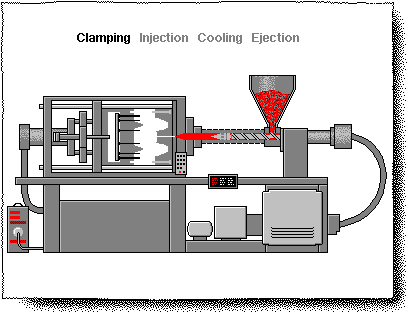
Injection molding is a parts manufacturing process by injecting plastic molding material into a mold, of which the main method applied is injection molding. In this process, the plastic is loaded into a hopper, which will then feed the plastic into a heated injection unit. After being pushed through a long chamber with a reciprocating screw, the plastic material is melted into fluid. An injection nozzle is located at the end of the chamber, through which molten plastic is forced into a cold, closed mold. After the plastic is cooled and solidified, the semi-finished product will be ejected from the mold.
Plastic Extrusion

Plastic extrusion is a process for massive production, in which the plastic material is melted into a continuous shape. The extrusion process is usually applied to produce films, continuous sheets, pipes, profiles, bars, coating wires, filaments, cords and cables, etc. Together with the injection molding machine, the dried plastic material is loaded into a hopper and fed into a long heating chamber. At the end of the chamber, the material is forced out from a small opening or into a mold that’s in the shape of the desired product. As the plastic leaves the mold, it will be cooled down on a conveyor belt. A blower is sometimes involved in this process to facilitate cooling.
Blow Molding
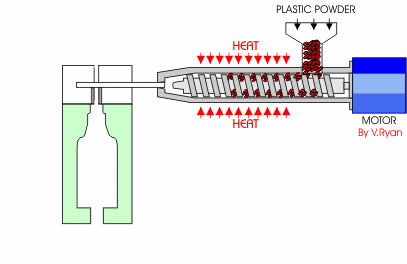
Blow molding process is applied to produce hollowed plastic products. Making use of air pressure, this post-forming technology blows the rubbery state parison in a closed cavity into a hollowed product.
Thermoforming

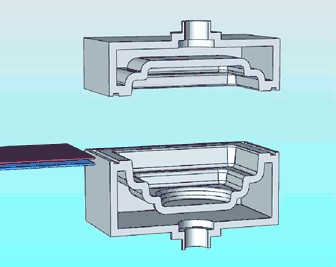
Thermoforming is a special manufacturing process which shapes the thermoplastic material into various products. The plastic sheet fixed on a frame is heated, softened, and then pressed against the molding surface under an external force, so as to mold it into the desired shape. After being cooled and trimmed, the desired product is obtained. This process is also applicable to rubber manufacturing. In recent years, thermoforming has witnessed all-new progress, e.g. the continuous production technology from sheet extrusion to thermoforming.
The 2nd animation shows the thermoforming process that involves 2 plastic sheets.
Compression Molding
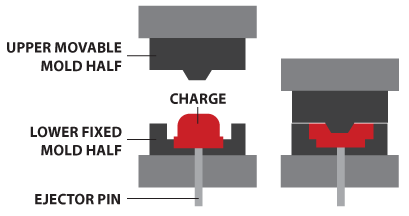
Compression molding is the most commonly applied process for thermosetting materials. Usually, it is not applied to thermoplastics. In this process, the material is compressed into the desired shape. Plastic molding powder and other additives are added into the mixture to create special properties. When the mold is closed and heated, the material will be hardened to form the desired shape. The appropriate temperature, pressure and time duration applied in the process is dependent on the desired result.
Calendering
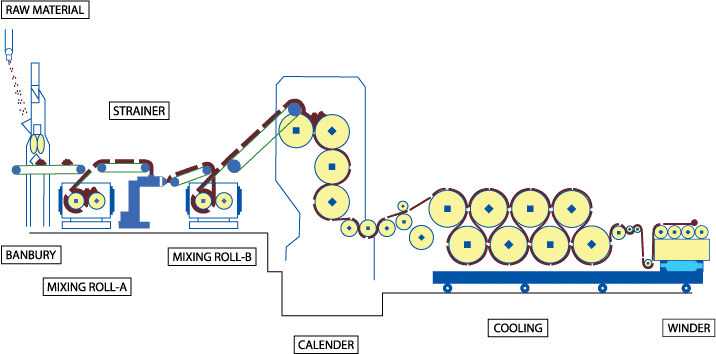
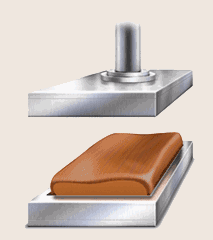
Calendering is a finishing process of heavy leather. When heated, the plasticity of the fiber is utilized to smoothen textile surface or create fine-grained parallel diagonals on the surface, so as to improve textile glossiness. After feeding, the material is heated and softened, then shaped into a sheet or film, and finally cooled down and rolled up. The most commonly calendered material is PVC.
Pultrusion
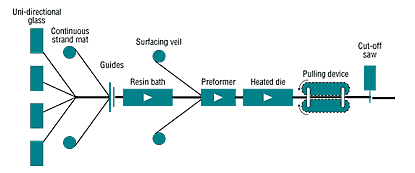
Pultrusion refers to the process where the blank is put under an uneven pressure from 3 different directions, and then extruded from mold opening or crevice, so as to reduce the sectional area and increase the length for production of the desired product. This blank forming process is referred to as pultrusion.
Vacuum Forming

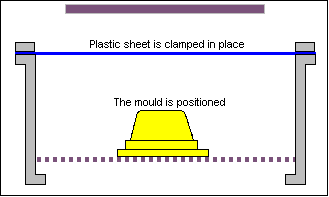
Often known as suction forming, vacuum forming is a plastic processing technology by which a hard plastic sheet is vacuum-compressed against the mold surface after being heated and softened. After cooling, the desired product is produced. This process is widely applied in industries like plastic packaging, lighting, advertising, decoration and more.
Rotational Molding
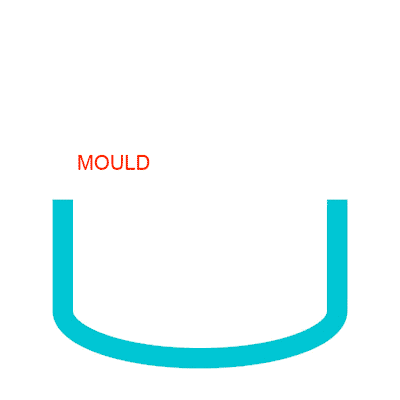
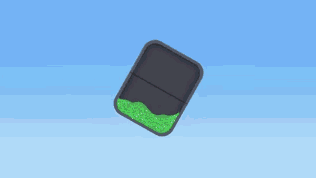
Also known as rotational moulding or rotomolding, the rotational plastic molding process firstly feeds the plastic material into the mold, which will keep rotating along the 2 vertical axes while being heated. Under the influence of both gravity and heat, the plastic inside the mold will gradually and evenly spread over and stick to the entire surface of the mold cavity. After cooling and ejection, the desired product will be made.
All copyright reserved by injection molding company Eco Molding
